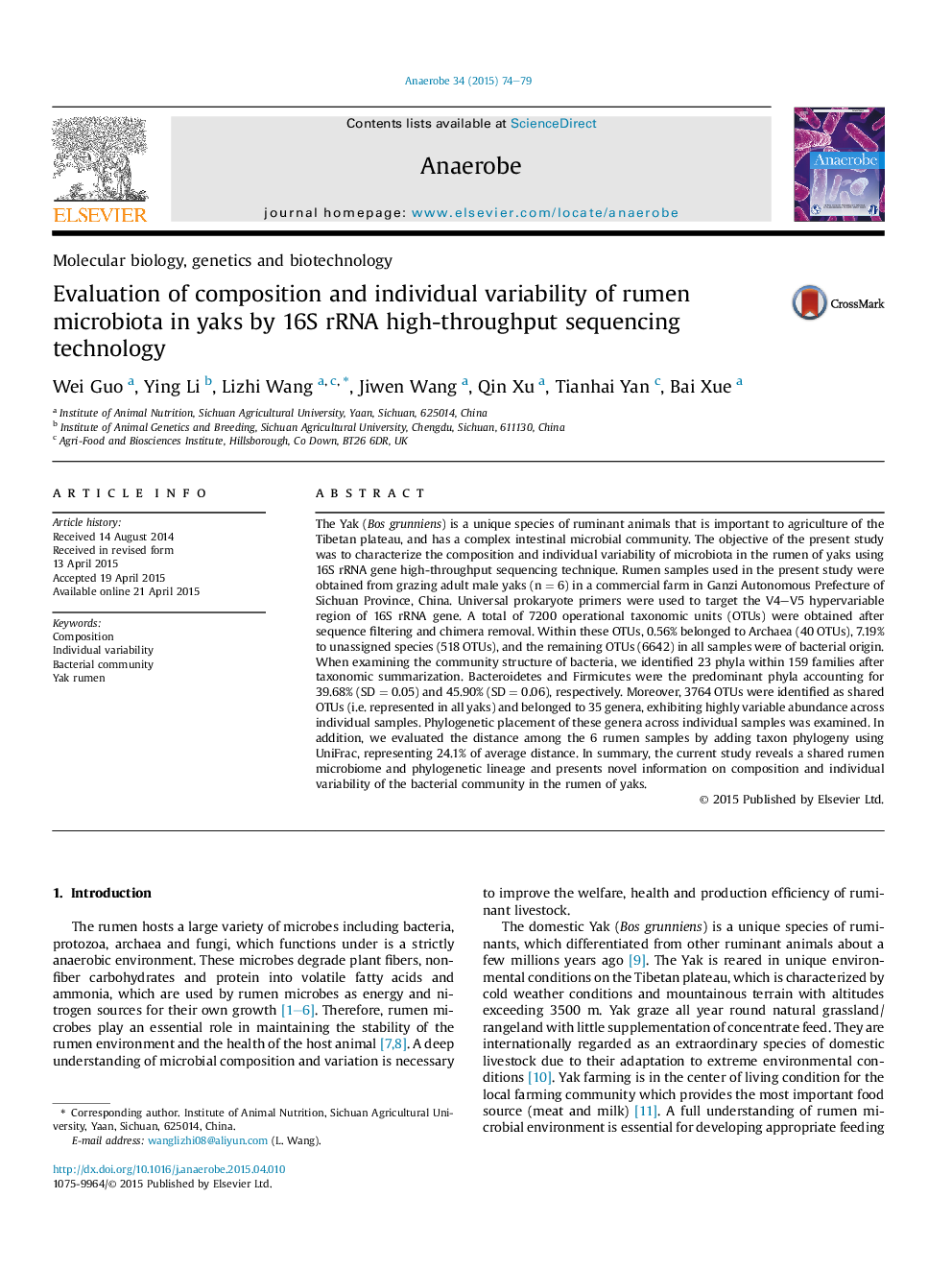| کد مقاله | کد نشریه | سال انتشار | مقاله انگلیسی | نسخه تمام متن |
|---|---|---|---|---|
| 3394950 | 1592829 | 2015 | 6 صفحه PDF | دانلود رایگان |

• Variation in rumen microbial composition of yaks was small.
• Novel organisms presented in the rumen of yaks.
• Genera shared by all yaks and their phylogenetic lineages identified.
• Diversity of rumen microbiota in yaks was higher than in other herbivores.
The Yak (Bos grunniens) is a unique species of ruminant animals that is important to agriculture of the Tibetan plateau, and has a complex intestinal microbial community. The objective of the present study was to characterize the composition and individual variability of microbiota in the rumen of yaks using 16S rRNA gene high-throughput sequencing technique. Rumen samples used in the present study were obtained from grazing adult male yaks (n = 6) in a commercial farm in Ganzi Autonomous Prefecture of Sichuan Province, China. Universal prokaryote primers were used to target the V4–V5 hypervariable region of 16S rRNA gene. A total of 7200 operational taxonomic units (OTUs) were obtained after sequence filtering and chimera removal. Within these OTUs, 0.56% belonged to Archaea (40 OTUs), 7.19% to unassigned species (518 OTUs), and the remaining OTUs (6642) in all samples were of bacterial origin. When examining the community structure of bacteria, we identified 23 phyla within 159 families after taxonomic summarization. Bacteroidetes and Firmicutes were the predominant phyla accounting for 39.68% (SD = 0.05) and 45.90% (SD = 0.06), respectively. Moreover, 3764 OTUs were identified as shared OTUs (i.e. represented in all yaks) and belonged to 35 genera, exhibiting highly variable abundance across individual samples. Phylogenetic placement of these genera across individual samples was examined. In addition, we evaluated the distance among the 6 rumen samples by adding taxon phylogeny using UniFrac, representing 24.1% of average distance. In summary, the current study reveals a shared rumen microbiome and phylogenetic lineage and presents novel information on composition and individual variability of the bacterial community in the rumen of yaks.
Journal: Anaerobe - Volume 34, August 2015, Pages 74–79